Best-performing Export Items Highlight Taiwan's Furniture Industry
2011/08/23 | By Michelle Hsu | STINCO ENTERPRISE CO., LTD.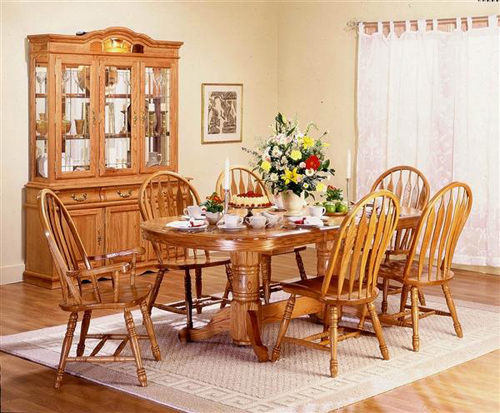
Dining Room Sets
Among these signature products on show was the Windsor Chair, a typical western-style chair that gained rapid popularity among American households thanks to the affordable prices of chairs made by Taiwanese companies as OEM manufacturers for American buyers.
Taiwan-made Windsors come in a wide variety of chairs with such common features as solid saddle-like seats into which are fixed comb-shaped back and leg parts. Whereas traditional Windsors are made with arms as single items, most of the simplified Taiwan-made Windsors are without arms and come as parts of dining room sets.
The seat of a Windsor chair provides stability for both upper and lower portions. Back frames and continuous arms, if any, are made with stream-bent wood pieces. Pine is a common material for the seat, whereas oak, ash, and hickory are used for making the bent pieces and slender parts.
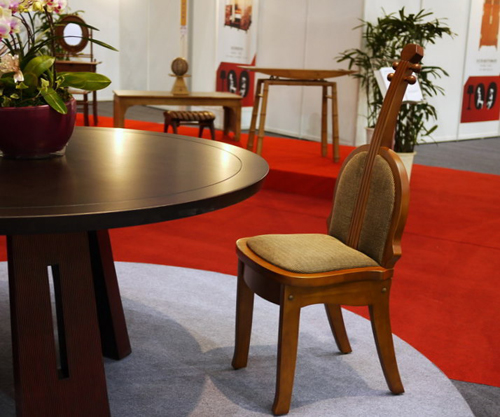
The simplified Windsor made by the C.C. Co., for example, is a typical painted model, with a seat in the original color and back and legs of white. Windsor chairs from Shin Lee Wood Products Co. come in a variety of styles, the more complicated ones mostly in the original wood color to preserve the beauty of the natural texture and grain. Some Windsors are made with a two-layer back and flat arms to strengthen their support function. Shin Lee offers Windsor chairs as single pieces, and some are modified as rockers.
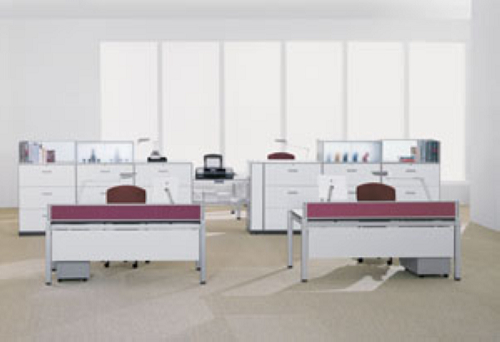
Due to the labor-intensive nature of their production, most Taiwanese makers of dining room sets began relocating their production lines abroad, mostly to Southeast Asia and China, beginning around the mid-1980s. At first they operated factories both in Taiwan and overseas, but with a growing emphasis on overseas operations. A few furniture makers have remained on the island; among them is the Formosa Design Center, which was transformed from a furniture maker and switched from traditional OEM production to a focus on design. In 1999 the company unveiled “Formosa” as the brand name for furniture designed and produced in Taiwan.
The Formosa Design Center displayed its most outstanding furniture items in the ROC Centennial Celebration pavilion at TIFS, including a dining room set with chairs featuring violin-shaped backs and a big round Chinese-style table (capable of accommodating 10 or 12 diners) with a rotating wooden platform in the center.
OA Furniture
Taiwan's office automation (OA) furniture industry began expanding along with the use of the Internet in the 1980s, and most modern OA furniture is designed to fit in with the operations of computers, printers, and other electronic devices and office communications equipment. Most office chairs now sport ergonomic design. Overall, OA furniture emphasizes maximized working efficiency and comfort.
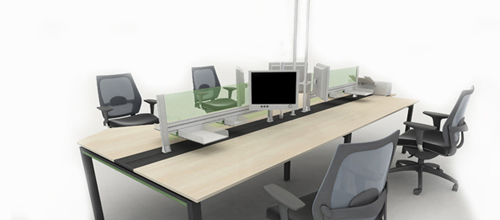
The Aurora Group was established more than four decades ago as an office equipment supplier; it set up its OA furniture division in 1999, and quickly expanded to take the leadership in Taiwan's OA furniture market. At one time, the Aurora Group claimed a Taiwan market share of over 70%.
A standard OA furniture set generally includes a table, a chair, and a cabinet. One of Aurora's best-selling OA furniture sets includes a steel system cabinet which can be used for storage or as a sectioning item for room division. The multi-functional cabinet design allows users to share OA equipment, such as printers and fax machines, placed on the top of the cabinet.
Aurora's OA furniture comes mostly in light colors like white, beige, and gray so as to generate a bright working environment.
The UB Group, established in 1973, became a market leader in the early 1990s thanks to an innovative OA furniture style which is popular with companies that prefer a modern and stylish working environment. The special structure of its OA furniture allows easy disassembly and reassembly, making it convenient for users to adjust the arrangement of their furniture to fit their working space.
Taiwan Glass Cluster
Taiwan Mirror Glass Enterprise (TMG), which uses the slogan “We make your life brighter,” is an outstanding example of the successful transformation of a small family shop into a modern, internationally-recognized enterprise. The company dates back to 1943 when a family named Lin set up a glass shop in central Taiwan's Changhua County.
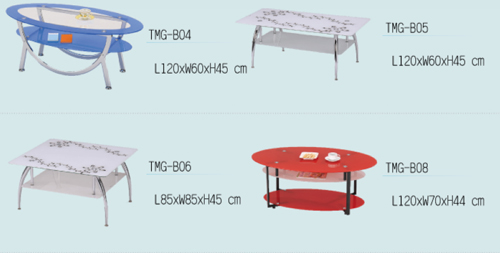
One of the cluster's best-selling products, Lin says, is a glass table with floral and butterfly images inlaid on the glass top to present the natural beauty of Taiwan.
The cluster has grown constantly since its establishment and was recently renamed the “Team Taiwan Cultural and Creative (TTCC)” cluster to pinpoint its dedication to promoting cultural creative industries. Originally formed with a membership of 28 glass furniture makers, TTCC quickly expanded into other glass products such as glassware and glass furnishings, operating like a supply chain that horizontally links glass product makers and vertically integrates the operations of suppliers of components made of various materials such as metal, wood, and plastics. Product diversification and operational integration is the key to the cluster's success.
The group of partner companies has introduced an all-around innovative management pholosophy aimed at developing a cross-industry cluster distinguished by an emphasis on eco-friendly productivity, cultural value, and sustainability.
In addition to its core manufacturing operations in Taiwan, the cluster runs an R&D center to pursue design innovation and strengthen international competitiveness.
Located in the Changbin (Changhua Coastal) Industrial Zone, the cluster originally embraced companies in neighboring areas of Changhua County, Taichung City, Nantou County, and Yunlin County but has now expanded its operations to cover companies all over Taiwan. By 2007 the cluster's membership had grown to around 210 companies, and the number is targeted to soar to over 500 companies by 2013.




